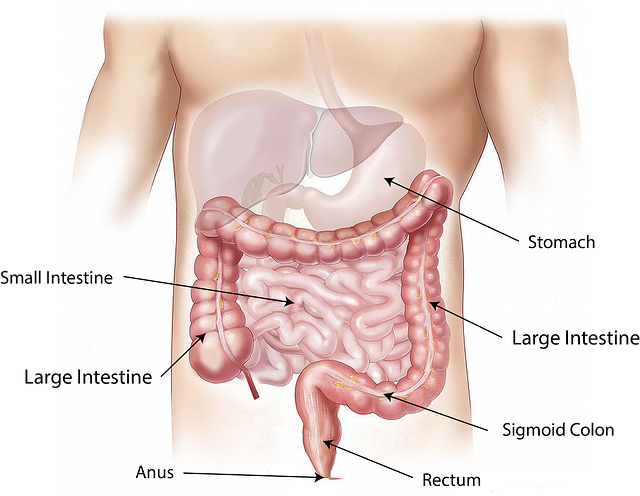What Are Current Celiac Disease Statistics?
Receive a free 50+ page guide with gut rebuilding recipes and tips from 45 wellness experts, courtesy of gut health expert Summer Bock. Also check out her Better Belly Project 2.0.

The celiac disease statistics presented on this page include the prevalence of celiac disease, who gets this disease, and some statistics about celiac symptoms. Also covered are how many celiacs are undiagnosed and how long it takes to get diagnosed, as well as some of the possible complications (including death!) caused by celiac disease.
As with statistics on likely any topic, a few of these celiac disease statistics don't quite agree with each other. But that is how it works with science and statistics.
How Prevalent Is Celiac Disease?
- The prevalence of celiac disease worldwide is estimated to range from .6 to 1%.
Source: Velasqeuz-Manoff M. Who has the guts for gluten? New York Times. Feb. 23, 2013. - For more statistics about celiac disease prevalence, see How Common Is Celiac Disease?
Who Gets Celiac Disease, According to Celiac Disease Statistics?
- According to the World Gastroenterology Organisation, females have celiac disease twice as often as males.
Regarding ethnicity, early studies regarded celiac disease as a disease of those with Caucasian ancestry, mainly from Europe and North America. However, later studies have detected celiac disease with a similar prevalence among people with American Indian or African-American ancestry. Recent reports have shown that celiac disease is a common disorder in North Africa, the Middle East, India, and Pakistan. Even in the provinces of Jiangsu and Zhejiang in China, celiac disease is not rare.
Source: World Gastroenterology Organisation's Global guidelines: celiac disease. Apr 2012. - In one study in the Unites States with 7,798 participants, celiac disease was rare among minority groups. “In fact, virtually all the individuals we found were non-Hispanic Caucasians,” says co-author Alberto Rubio-Tapia, MD, a Mayo Clinic gastroenterologist. However, previous research in Mexico has shown that celiac disease could be higher or similar to that observed in other countries, such as in the United States.
Source: Kilen, B. Most with celiac disease unaware of it, study reveals. Mayo Clinic News Network. Jul 30, 2012.
Source (of study reference): Rubio-Tapia A, Ludvigsson JF, Brantner TL, Murray JA, Everhart JE. The prevalence of celiac disease in the United States. Am J Gastroenterol. 2012;107(10):1538-1544. - Although the following quotation does not include celiac disease statistics (or relevant citations), it summarizes what is known about the prevalence of celiac disease in African Americans.
“Most sources state that celiac disease is rare in African Americans and those of Asian and Caribbean background, however data also demonstrates that African Americans susceptible to the disease can frequently be misdiagnosed. Based on information from several reputable sources, some African Americans with Type 1 diabetes have more potential of developing the illness than others, but many African American Type 1 diabetics test negative for the gene predisposing them to celiac disease. These findings notwithstanding, a general under-diagnosis of celiac disease in African Americans is reported in the literature.”
Source: Carlson, K. Is celiac disease a threat for blacks? BlackDoctor.org. Mar 21, 2011.
What Are Some Celiac Disease Statistics With Respect to Symptoms?
- According to registered dietician Shelly Case, “Symptoms of celiac disease can appear at any age from infancy well into senior adulthood. The average age of diagnosis is between the 4th and 6th decades of life, with approximately 20% of cases diagnosed in those who are more than 60 years of age.”
Source: Case, S. Celiac disease: still vastly under-diagnosed. Canadian Society of Intestinal Research (CSIR). - In Alessio Fasano's landmark 2003 study about the prevalence of celiac disease, researchers determined that 60% of children and 41% of adults diagnosed during the study were asymptomatic (without symptoms).
Source: Fasano A, Berti I, Gerardazzi T, et al. Prevalence of celiac disease in at-risk and not-at-risk groups in the United States: a large multicenter study. Arch Intern Med. 2003;163(3):286-292. - Celiac disease is associated with about 300 symptoms. Some of these symptoms are gastrointestinal but many aren't. Some of the latter include iron-deficiency anemia, peripheral neuropathy, and psychiatric disorders such as anxiety and depression.
Source: University of Chicago Celiac Disease Center. Learn about the hundreds of celiac disease symptoms. - According to the Mayo Clinic, “Although the classic signs are diarrhea and weight loss, most people with celiac disease experience few or no digestive signs or symptoms. Only about one-third of people diagnosed with celiac disease experience diarrhea, and about half have weight loss. Twenty percent of people with celiac disease have constipation, and 10 percent are obese.”
Source: Mayo Clinic. Celiac disease: symptoms. - “Dermatitis herpetiformis is an intensely itchy, blistering skin rash that affects 15 to 25 percent of people with celiac disease.”
Source: Rodrigo L. Celiac disease. World J Gastroenterol. 2006;12(41):6585-6593.
How Many People With Celiac Disease Are Undiagnosed?
- Research shows that of the 3 million Americans with celiac disease, 83% of them are undiagnosed.
Source: Green PHR, Stavropoulos SN, Panagi SG, et al. Characteristics of adult celiac disease in the USA: results of a national survey. Am J Gastroenterol. 2001;96(1):126-131. - Of 7,798 participants in one study, 35 were found to have celiac disease. Of those, 29 were unaware of their diagnosis. This means that 83% of these 35 participants had been undiagnosed until this study.
Source: Rubio-Tapia A, Ludvigsson JF, Brantner TL, Murray JA, Everhart JE. The prevalence of celiac disease in the United States. Am J Gastroenterol. 2012;107(10):1538-1544. - According to celiac disease researcher Alessio Fasano, MD, in developed countries, for each diagnosed case of celiac disease, an average of 5 to 10 cases remains undiagnosed. In addition, screening studies in the United Kingdom show that over 90 percent of celiac disease in schoolchildren is undiagnosed.
Source: Fasano, A with Flaherty, S. Gluten Freedom: The Nation's Leading Expert Offers the Essential Guide to a Health, Gluten-Free Lifestyle. Wiley General Trade, an imprint of Turner Publishing Company. 2014.
How Long Does It Take to Get Diagnosed?
- It typically takes 6–10 years for a person with celiac disease to be correctly diagnosed.
Source: Daniel Leffler, MD, MS, The Celiac Center at Beth Israel Deaconness Medical Center. - In the United States, it takes an average of 4 years for a symptomatic person to be diagnosed with celiac disease.
Source: Green, P.H. et.al. Characteristics of adult celiac disease in the USA: results of a national survey. Am J Gastroenterol, 2001, 2006.
What Are Celiac Disease Statistics Regarding Possible Complications?
- The years-long delay commonly observed in diagnosing celiac disease dramatically increases an individual’s risk of developing autoimmune disorders, neurological problems, osteoporosis, and cancer.
Source: Green, P.H. et.al. Characteristics of adult celiac disease in the USA: results of a national survey. Am J Gastroenterol, 2001, 2006. - The following statistics reflect the reproductive ills that both women and men with celiac disease can face.
“Several studies report miscarriage rates to be substantially higher among women with untreated celiac disease than among healthy women, with one study finding the rate of spontaneous abortion to be nearly nine times higher. The incidence of low birth-weight babies is reportedly almost six times higher in women with untreated celiac disease. The risk of intrauterine growth retardation may be increased three-fold.”
“A study of men with celiac disease found nearly half of them to have hypogonadism, sexual dysfunction, or poor semen quality, resulting in increased infertility.”
Source: Celiac Disease Awareness Campaign of the National Institutes of Health. Celiac disease and reproductive problems. - One possible, though rare, complication of celiac disease is lymphoma. The following explains the celiac disease statistics with respect to this form of cancer.
Over a 10-year period, “the risk of lymphoma in a celiac disease patient is 7 in 1000,” states researcher Benjamin Lebwohl, MD, MS, Assistant Professor of Medicine and Epidemiology at the Celiac Disease Center at Columbia University. “A patient with persistent villous atrophy has a 10 in 1000 risk, while a patient with healed intestines has a 4 in 1000 risk. So while there are differences here, the vast majority of celiac disease patients never develop lymphoma.”
Source: Beyond Celiac. Celiac disease and lymphoma: researcher explains the risk. Aug 14, 2013.
How Does Celiac Disease Affect Mortality Rates?
- “Our results confirm that the overall mortality in adult coeliac disease patients is double that of the general population, and show that delay in diagnosis, poor adherence to treatment, and severity of symptoms at presentation unfavourably affect patients’ outlook.”
Source: Corrao G1, Corazza GR, Bagnardi V, et al. Mortality in patients with coeliac disease and their relatives: a cohort study. Lancet. 2001;358(9279):356-361. - According to Mayo Clinic studies, undiagnosed celiac disease can quadruple the risk of death.
Source: Celiac disease: on the rise. Discovery's Edge, the Mayo Clinic's online research magazine. Jul 2010.
CeliacFAQ.com home page > Celiac Disease FAQ > What Are Current Celiac Disease Statistics?


